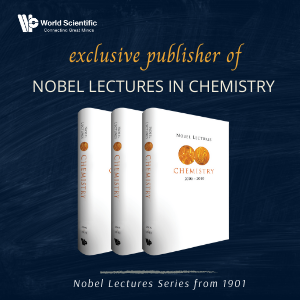System Upgrade on Tue, May 28th, 2024 at 2am (EDT)
Existing users will be able to log into the site and access content. However, E-commerce and registration of new users may not be available for up to 12 hours.For online purchase, please visit us again. Contact us at customercare@wspc.com for any enquiries.
Excitons are considered as the basic concept used by describing the spectral properties of photosynthetic pigment-protein complexes and excitation dynamics in photosynthetic light-harvesting antenna and reaction centers. Following the recently obtained structures of a variety of photosynthetic pigment-protein complexes from plants and bacteria our interest in understanding the relation between structure, function and spectroscopy has strongly increased. These data demonstrate a short interpigment distance (of the order of 1 nm or even smaller) and/or a highly symmetric (ring-like) arrangement of pigment molecules in peripheral light-harvesting complexes of photosynthetic bacteria. Books which were devoted to the exciton problem so far mainly considered the spectral properties of molecular crystals. However, the small size of these pigment aggregates in the pigment-protein complexes as well as the role of the protein, which is responsible for the structural arrangement of the complex, clearly will have a dramatic influence on the pigment spectra and exciton dynamics. All these aspects of the problem are considered in this book. Exciton theory is mainly considered for small molecular aggregates (dimers, ring-like structures etc.). Together with the theoretical description of the classical conceptual approach, which mainly deals with polarization properties of the absorption and fluorescence spectra, the nonlinear femtosecond spectroscopy which is widely used for investigations now is also discussed. A large part of the book demonstrates the excitonic effects in a multitude of photosynthetic pigment-protein complexes and how we can understand these properties on the basis of the exciton concept.
Contents:
- Introduction: Structural Organization, Spectral Properties and Excitation Energy Transfer in Photosynthesis
- The Exciton Concept
- Some Optical Properties of the Excitonically Coupled Dimer
- Mixing with Higher Excited States
- Spectral Shapes: Homogeneous and Inhomogeneous Broadening
- Spectroscopy of Excitons in Molecular Crystals and Aggregates
- Excitonic Interactions in Photosynthetic Systems: Spectroscopic Evidence
- Exciton Dynamics
- Exciton Dynamics in Different Antenna Complexes. Coherence and Incoherence
- Migration of Localized Excitations: Förster Excitation Energy Transfer and Trapping by Reaction Centers
- Exciton Energy Transfer and Trapping. Experiments
- Nonlinear Annihilation of Excitons. Theory
- Nonlinear Annihilation of Excitons. Experimental
- Nonlinear Spectroscopy
Readership: Students and researchers in biophysics, condensed matter/solid state physics, atomic & molecular physics and biochemistry.























